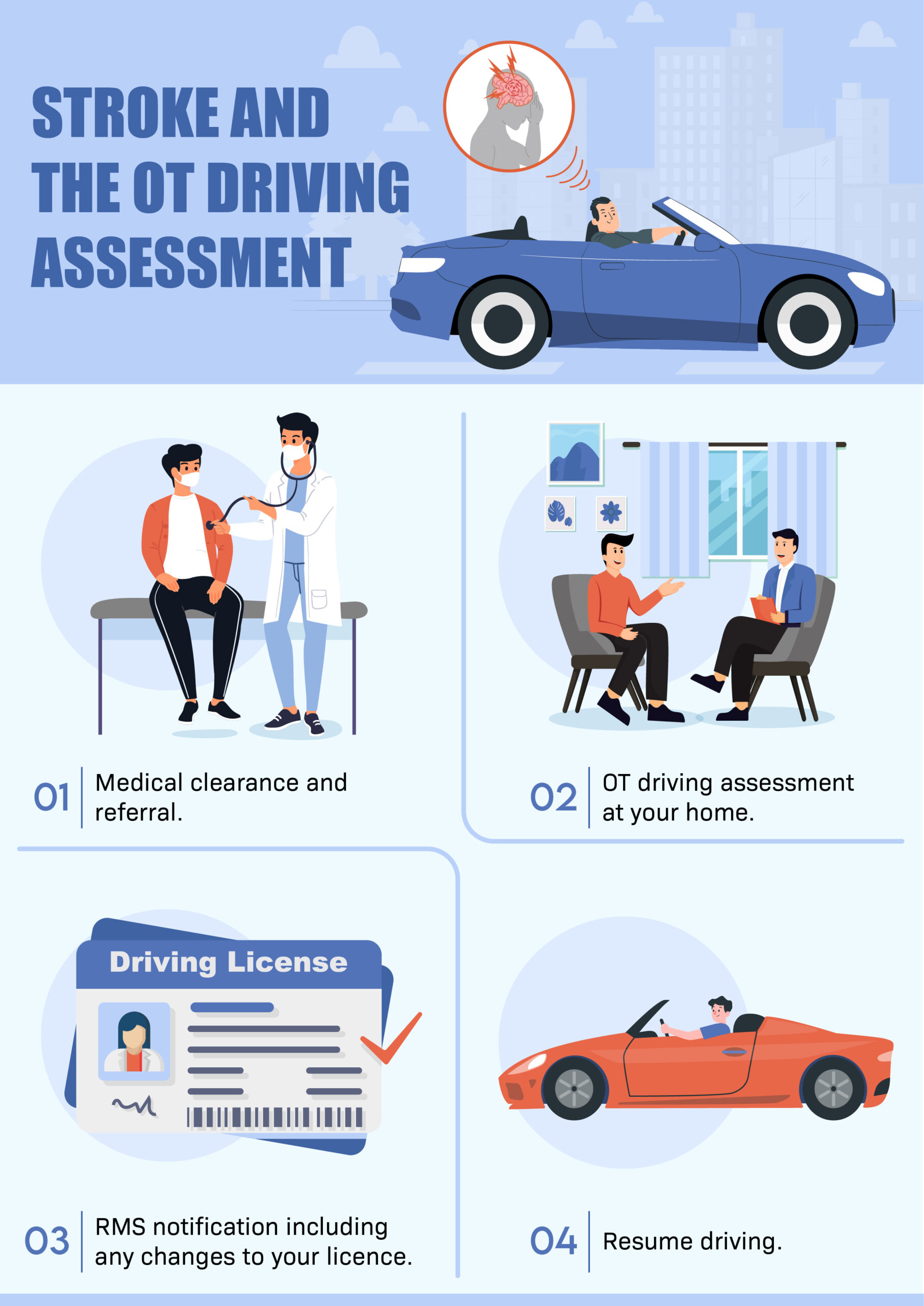What is a stroke?
When the brain does not get enough blood and its oxygen supply decreases, its cells begin to perish as they become dangerously lacking in nutrients. This is the catalyst for a stroke, which occurs one of two ways: a) a blood vessel becomes obstructed (usually by plaque from cholesterol or blood clots), which is called an ischaemic stroke; or b) a blood vessel ruptures or leaks, called a haemorrhagic stroke. A stroke is a serious and life-threatening event which can result in complications in the person’s general functioning, including driving skills. A stroke is a medical emergency, and once the person begins to recover, further investigations and decisions must be made regarding stroke and driving.

How can a stroke affect driving skills?
Driving is a difficult and complicated activity that requires a driver to effectively coordinate several physical, cognitive and visual skills simultaneously. A stroke will have varying effects on different individuals in relation to their driving capacity. Some people may recover well and suffer little or few side effects, while other people may suffer permanent effects following the stroke. Stroke and driving can be affected in the following ways:
- Cognitive problems such as deficits in spatial awareness, judging distances, memory, problem-solving and decision-making, concentration, understanding of road rules
- Visual difficulties
- Becoming fatigued more easily or lower tolerance to stress (particularly when faced with novel or unfamiliar situations/environments)
- Increased likelihood of seizures
- Changes in sensory modulation, e.g. loss of feeling in limbs
- Physical problems, e.g. loss of functioning/weakness in limbs
- Reduced reactivity time
OT driving assessment
Occupational therapy (OT) is a stream of allied health that concentrates on enhancing a person’s functioning and independence. An OT who performs driving assessments is called a driver trained occupational therapist, who has completed this special qualification and training.
The driving assessment’s purpose is to determine your fitness to drive relating to stroke and driving. It is important to note that as in any situation where a driver has been diagnosed with a new medical condition or experienced a serious medical event, safety is the biggest priority. The process for assessing the person’s stroke and driving is divided into two parts, and the OT and driving instructor usually visits you at home:
- Off-road section: The OT assesses your visual, cognitive and physical condition, looking for any crucial signs of deficits that may affect your driving.
- On-road section: You drive the driving instructor’s car (as it is dual-controlled for braking) in all traffic settings for one hour. The instructor is a rehabilitation driving instructor who is specialized in working with drivers with medical conditions.
The assessment is focused on evaluating the effects (if any) of the stroke and driving performance. The OT and driving instructor largely disregard small errors made, such as those due to anxiety under testing conditions, or mistakes committed related to being unfamiliar with the car. However, if the driving instructor needs to physically mediate (by applying the emergency brake or controlling the steering wheel), it is regarded as a crucial error and constitutes a ‘fail’ result. This is because you were unable to properly respond to a situation and would potentially have caused an accident without the instructor’s intervention.
After the drive, the OT and driving instructor will inform you of the outcome. There are generally three potential consequences of the assessment:
- The stroke has not affected your driving capacity and the OT will recommend that you return to driving.
- The stroke has affected your ability to drive to RMS standards and the OT will recommend that your licence is cancelled. In this instance, the OT is of the clinical opinion that your condition will not improve and cannot be aided by driving lessons or vehicle modifications.
- The stroke has affected your driving ability on some level and some errors were made during the assessment, however, the OT believes that your driving conduct may be improved with driving lessons or car modifications. If the OT prescribes vehicle modifications, you will need lessons to become proficient using the modifications and you will not be able to drive without the modifications.
The OT will send the report to you, the RMS and your referring doctor outlining their recommendations.




